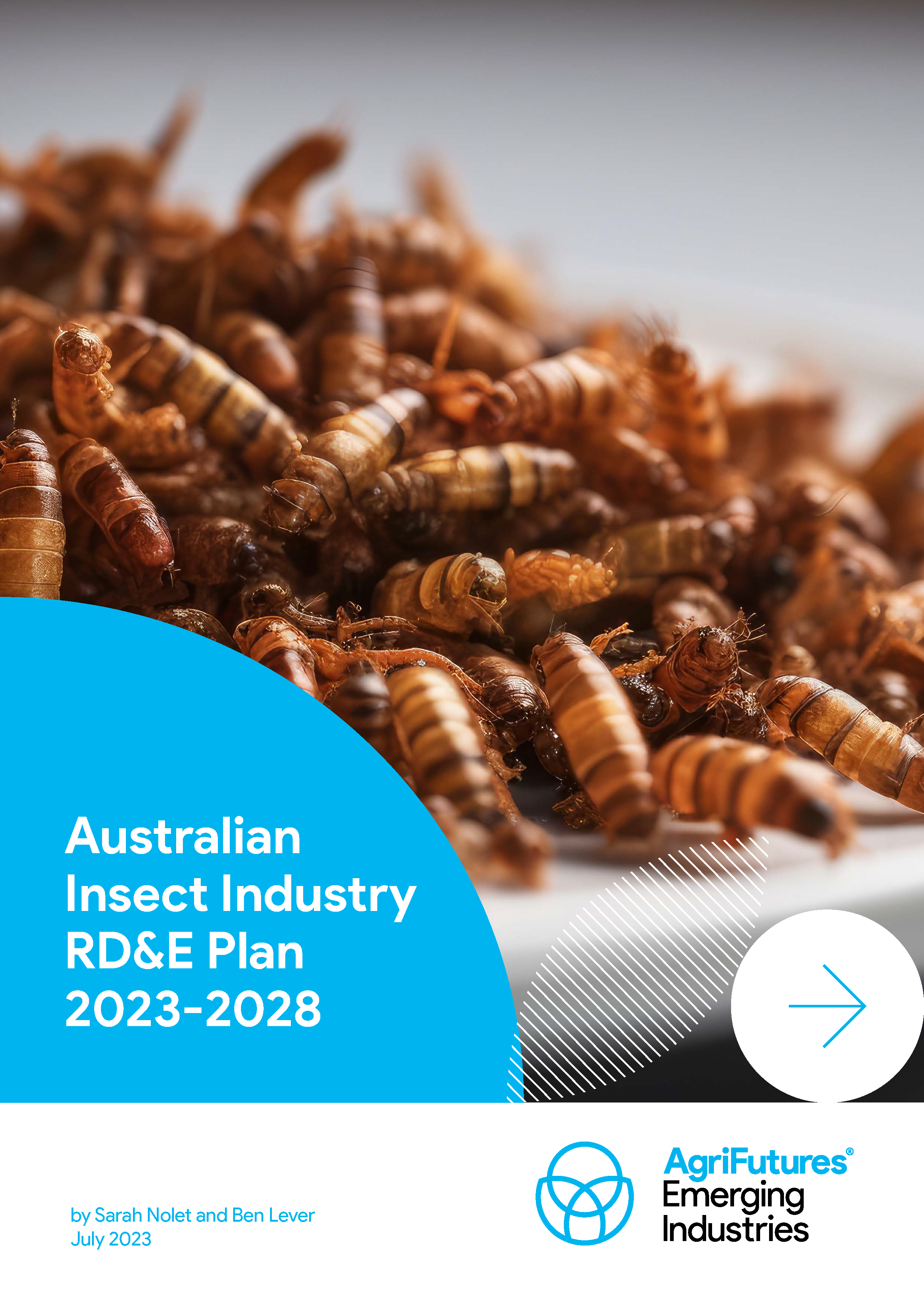Industry placemat: Insects
This placemat serves as a resource for those interested in the emerging insect industry. Within this placemat, you’ll find essential fast facts alongside the fundamental...
 INSECTS
INSECTS 
48 pages
Published: 17 Aug 2023
Author(s): Sarah Nolet, Ben Lever
ISBN: 978-1-76053-405-9
Download report PDF
DownloadPurchase a hard copy - AUD $50
The global increase in demand for protein has resulted in the rapid expansion of insect farming over the past decade. Insects are a highly efficient and sustainable alternative to traditional protein sources for human food and animal feed, and are an organic fertiliser. Estimates put the value of the global insect market between US$0.25 billion and US$0.82 billion in 2020, growing to more than US$3.6 billion in 2027 and US$6.8 billion by 2032.
Increased industry investment has been underpinned by insects’ potential as part of a circular economy, particularly to address several challenges, such as pressure on natural resources, food waste, climate volatility and a growing global population, as well as increased protein demand. Insects are more efficient converters of ingested food to body weight than traditional livestock. There is also considerable potential to use insects as feed, especially for poultry and fish, due to their high nutritional value and because they naturally form part of some livestock diets.
In Australia, the insect industry is following the global trend of rapidly increasing maturity, drawing on Australia’s strengths in agricultural research and biosecurity. An initial RD&E Plan for the insect industry was published in 2020. However, the rapidly evolving nature of the industry has resulted in a need to update industry priorities.
This Australian Insect Industry RD&E Plan 2023-2028 has been developed in close consultation with the Australian insect industry and has identified five RD&E themes to focus on over the next five years: (1) Best practice guidelines and standards to shore up the credibility and quality of the industry; (2) Efficiencies and optimisation for current systems and markets; (3) Opening up new markets, products and use cases for insects; (4) Market development, consumer education and social licence to operate; and (5) Enhancing, strengthening and growing the industry’s capacity and capabilities.
Industry supports delivery of these five themes to address key barriers to scale and to accelerate the sustainable, long-term growth and competitive advantage of the Australian insect industry.